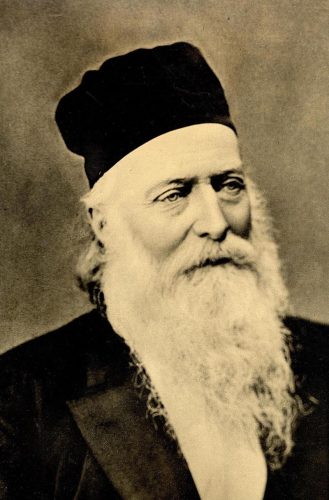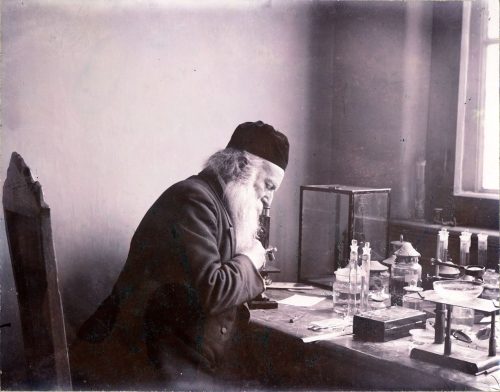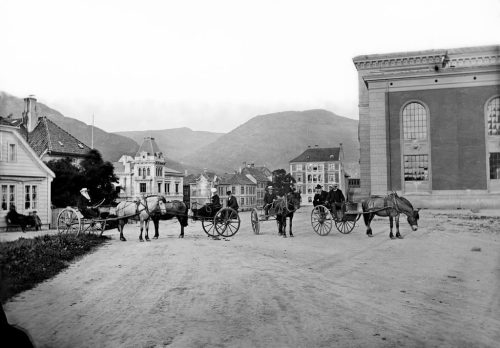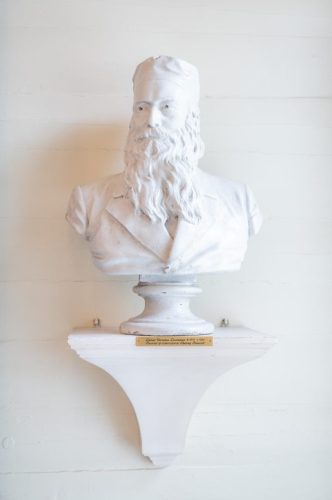Daniel Cornelius Danielssen (1815-1894)
Danielssen was the first to begin systematic studies of leprosy in Bergen. He was considered the leading leprosy researcher and clinician of his time and was pivotal in the development of a scientific research community in Bergen.

Daniel Cornelius Danielssen was born in Bergen and graduated Examinatus medicinae in 1838. After graduation, he worked first as a military surgeon and then as a district medical officer for a short time, before moving back to Bergen.
While studying in Christiania, Danielssen came into contact with brigade medical officer Hjort, who specialised in skin diseases. Back then, both leprosy and syphilis were considered skin diseases, and doctors struggled to distinguish between different diseases with similar symptoms.
On his return to Bergen, Danielssen began carrying out studies at St. Jørgen’s Hospital in 1839. He took on a permanent position there in 1841, before becoming head physician at the new Lungegård Hospital, which was completed in 1849. He studied the symptoms and progression of the disease, and tested different treatment methods. Danielssen’s work, which eventually also included microscopic studies of diseased tissue, helped lay the foundation for pathology as a field of medicine in Norway.
Danielssen succeeded in differentiating leprosy from the other diseases it was often confused with, and is therefore regarded as the founder of the modern understanding of leprosy. He went on to achieve international recognition, especially after publishing the major work Om Spedalskhed together with Carl Wilhelm Boeck in 1847.
Danielssen and many other physicians believed that leprosy was a hereditary disease. He did not observe any of the healthy residents or employees at St. Jørgen’s contracting the disease, and it was also evident that a large number of the residents had relatives with the same disease. Danielssen concluded that leprosy was a hereditary blood disease. He attempted to transmit the disease both to himself and to employees at Lungegård Hospital without success.
Danielssen’s work was broad in scope. As chairman of Bergens Museum for more than 30 years, he played a crucial role in the development of a research community in Bergen, especially in the natural sciences. He also studied botany and zoology. In 1876–1878, he led a Norwegian expedition to the waters between Norway, the Faeroes, Iceland, Jan Mayen and Spitsbergen.

In addition to medicine and science, Danielssen was active in local politics and held a seat in Parliament several times. He was also interested in the local cultural scene and ‘many other undertakings in Bergen’s spiritual and social life,’ as one of his contemporaries wrote.
Danielssen was a member of various scientific associations, both in Norway and abroad. He was appointed honorary doctor at the universities of Lund and Copenhagen and Commander of the Order of St. Olav in 1885.

Photo: Knud Knudsen. University of Bergen Library.

Photo: Bergen City Museum.



